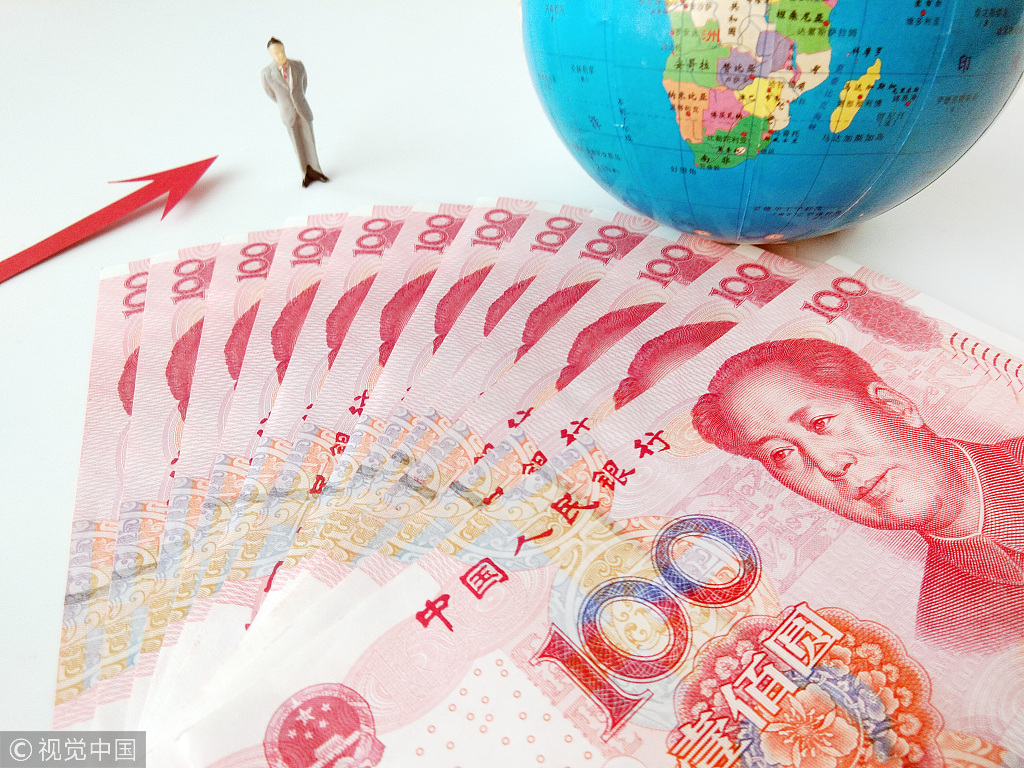JSCh
ELITE MEMBER

- Joined
- Jun 9, 2011
- Messages
- 13,233
- Reaction score
- 2
- Country
- Location
Holding of renminbi by world's central banks rises
By ZHOU LANXU, XIN ZHIMING | China Daily | Updated: 2018-10-11 03:06

Central banks across the world increased their holdings of renminbi by 32.6 percent in the second quarter, despite the currency's depreciation against the greenback, according to the latest figures released by the International Monetary Fund.
Analysts said the steady increase signals a strong momentum in use of the renminbi abroad, or renminbi internationalization, and the ratio could further rise in the coming years.
"It is certain that yuan internationalization will continue in the long term, immune to short-term market fluctuations and economic headwinds," said Zhang Xingrong, managing director at the Bank of China's Institute of International Finance.
By the end of June, total renminbi reserves of 149 monetary authorities, who report forex holdings to the IMF's Currency Composition of Official Foreign Exchange Reserves database, has risen for four consecutive quarters from 1.07 to 1.84 percent of their total forex reserves.
This was the first time the renminbi's proportion exceeded that of Australian dollar, official data released by the end of September said.
"China has made significant progress in financial market opening-up and participated in an expanding scale of trade, cross-border investment and human resource movement, naturally strengthening the yuan's international role," Zhang said, adding that the growth of the yuan's share in global reserves could help stabilize global financial markets with currency diversification.
Mei Dongzhou, an associate professor at the Central University of Finance and Economics, regarded the inclusion of the yuan into the Special Drawing Right currency basket as a major reason for its greater role in global reserves. The inclusion has induced automatic yuan allocation in official reserves and buoyed worldwide acceptance of the currency, he said.
Oct 1 marked the second anniversary of the yuan being included in the SDR — a reserve currency built from a basket of important national currencies assigned by the IMF — with a weight of 10.92 percent.
A recent report from Goldman Sachs Group estimated the renminbi's share in global reserves "should rise to around 3 to 4 percent by the end of 2022".
Fulfillment of yuan internationalization's great potential will rely on progress in the opening-up of China's financial markets and the development of financial markets' depth and breadth, which dictates the attractiveness of renminbi assets, Mei said.
Fang Xinghai, vice-chairman of the China Securities Regulatory Commission, told reporters in September that the country will keep improving both the convenience of foreign capital investing in China and fundamental market rules, including trading suspension, information disclosure and trade settlement.
Mei warned about the risk associated with further renminbi internationalization, given the potential pressure on the safety of cross-border capital flows.
By ZHOU LANXU, XIN ZHIMING | China Daily | Updated: 2018-10-11 03:06

Analysts said the steady increase signals a strong momentum in use of the renminbi abroad, or renminbi internationalization, and the ratio could further rise in the coming years.
"It is certain that yuan internationalization will continue in the long term, immune to short-term market fluctuations and economic headwinds," said Zhang Xingrong, managing director at the Bank of China's Institute of International Finance.
By the end of June, total renminbi reserves of 149 monetary authorities, who report forex holdings to the IMF's Currency Composition of Official Foreign Exchange Reserves database, has risen for four consecutive quarters from 1.07 to 1.84 percent of their total forex reserves.
This was the first time the renminbi's proportion exceeded that of Australian dollar, official data released by the end of September said.
"China has made significant progress in financial market opening-up and participated in an expanding scale of trade, cross-border investment and human resource movement, naturally strengthening the yuan's international role," Zhang said, adding that the growth of the yuan's share in global reserves could help stabilize global financial markets with currency diversification.
Mei Dongzhou, an associate professor at the Central University of Finance and Economics, regarded the inclusion of the yuan into the Special Drawing Right currency basket as a major reason for its greater role in global reserves. The inclusion has induced automatic yuan allocation in official reserves and buoyed worldwide acceptance of the currency, he said.
Oct 1 marked the second anniversary of the yuan being included in the SDR — a reserve currency built from a basket of important national currencies assigned by the IMF — with a weight of 10.92 percent.
A recent report from Goldman Sachs Group estimated the renminbi's share in global reserves "should rise to around 3 to 4 percent by the end of 2022".
Fulfillment of yuan internationalization's great potential will rely on progress in the opening-up of China's financial markets and the development of financial markets' depth and breadth, which dictates the attractiveness of renminbi assets, Mei said.
Fang Xinghai, vice-chairman of the China Securities Regulatory Commission, told reporters in September that the country will keep improving both the convenience of foreign capital investing in China and fundamental market rules, including trading suspension, information disclosure and trade settlement.
Mei warned about the risk associated with further renminbi internationalization, given the potential pressure on the safety of cross-border capital flows.










